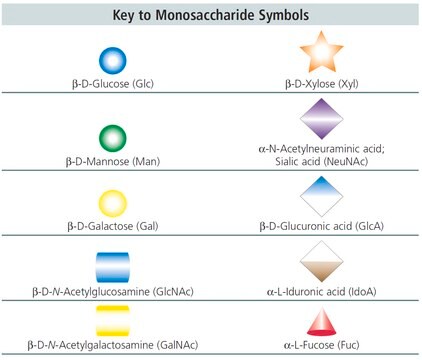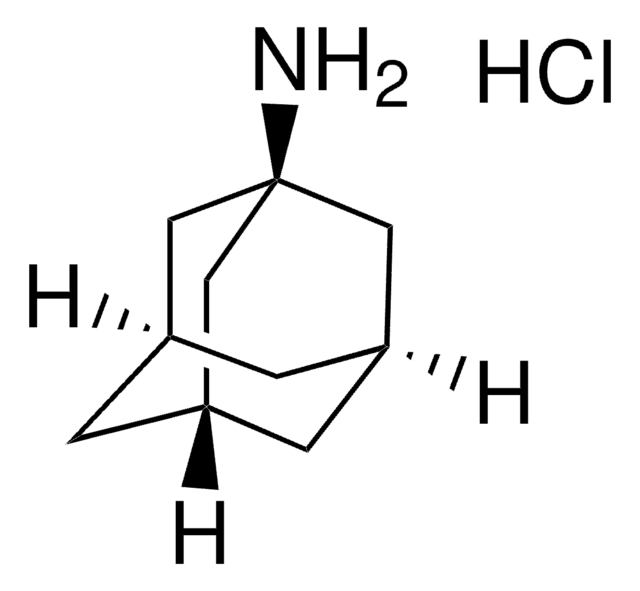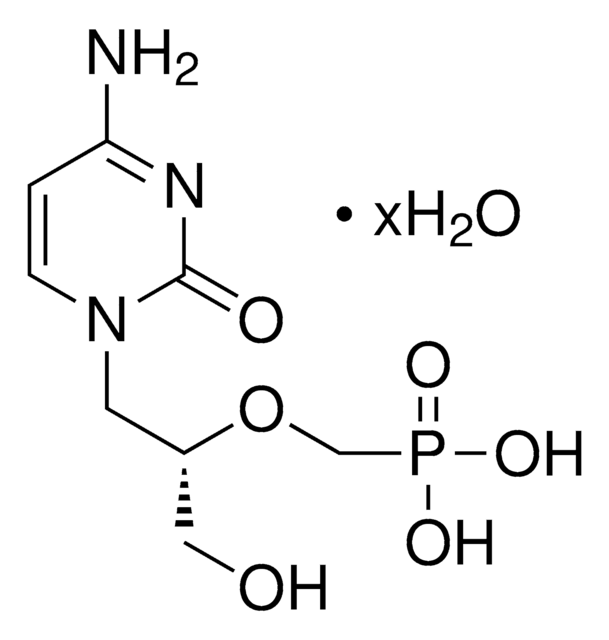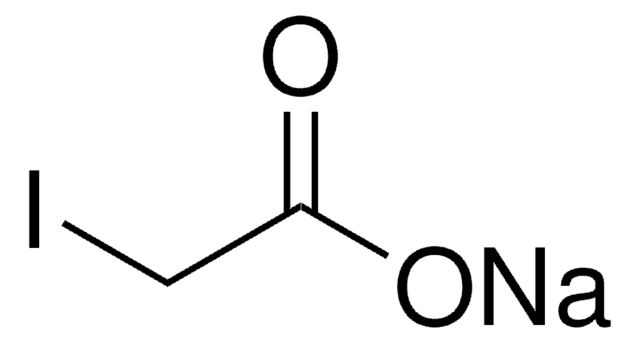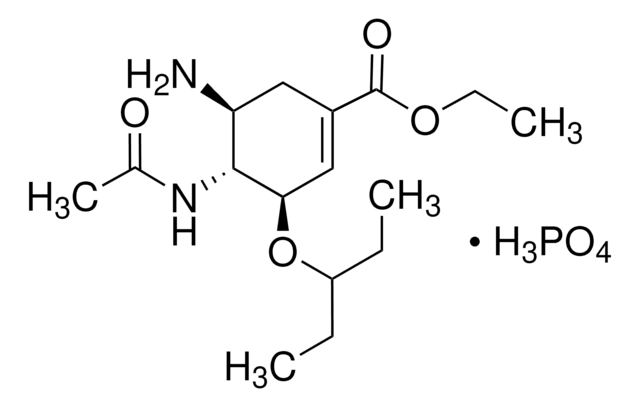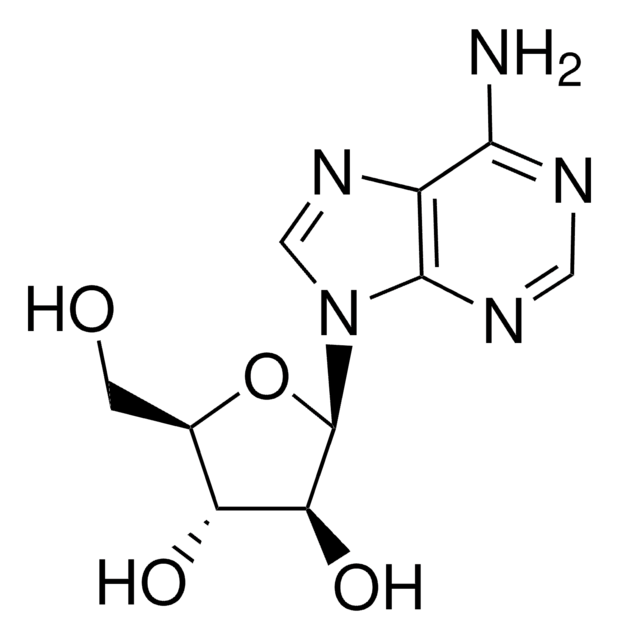P0035
Penciclovir
Synonym(s):
2-Amino-1,9-dihydro-9-[4-hydroxy-3-(hydroxymethyl)butyl]-6H-purin-6-one, BRL-39123
About This Item
Recommended Products
form
powder
Quality Level
solubility
0.02 M potassium phosphate: soluble 2 mg/mL
antibiotic activity spectrum
viruses
Mode of action
DNA synthesis | interferes
enzyme | inhibits
SMILES string
NC1=NC(=O)c2ncn(CCC(CO)CO)c2N1
InChI
1S/C10H15N5O3/c11-10-13-8-7(9(18)14-10)12-5-15(8)2-1-6(3-16)4-17/h5-6,16-17H,1-4H2,(H3,11,13,14,18)
InChI key
JNTOCHDNEULJHD-UHFFFAOYSA-N
Looking for similar products? Visit Product Comparison Guide
Application
Biochem/physiol Actions
Other Notes
Storage Class Code
11 - Combustible Solids
WGK
WGK 3
Flash Point(F)
Not applicable
Flash Point(C)
Not applicable
Regulatory Listings
Regulatory Listings are mainly provided for chemical products. Only limited information can be provided here for non-chemical products. No entry means none of the components are listed. It is the user’s obligation to ensure the safe and legal use of the product.
JAN Code
P0035-BULK:
P0035-100MG:
P0035-VAR:
Certificates of Analysis (COA)
Search for Certificates of Analysis (COA) by entering the products Lot/Batch Number. Lot and Batch Numbers can be found on a product’s label following the words ‘Lot’ or ‘Batch’.
Already Own This Product?
Find documentation for the products that you have recently purchased in the Document Library.
Our team of scientists has experience in all areas of research including Life Science, Material Science, Chemical Synthesis, Chromatography, Analytical and many others.
Contact Technical Service
